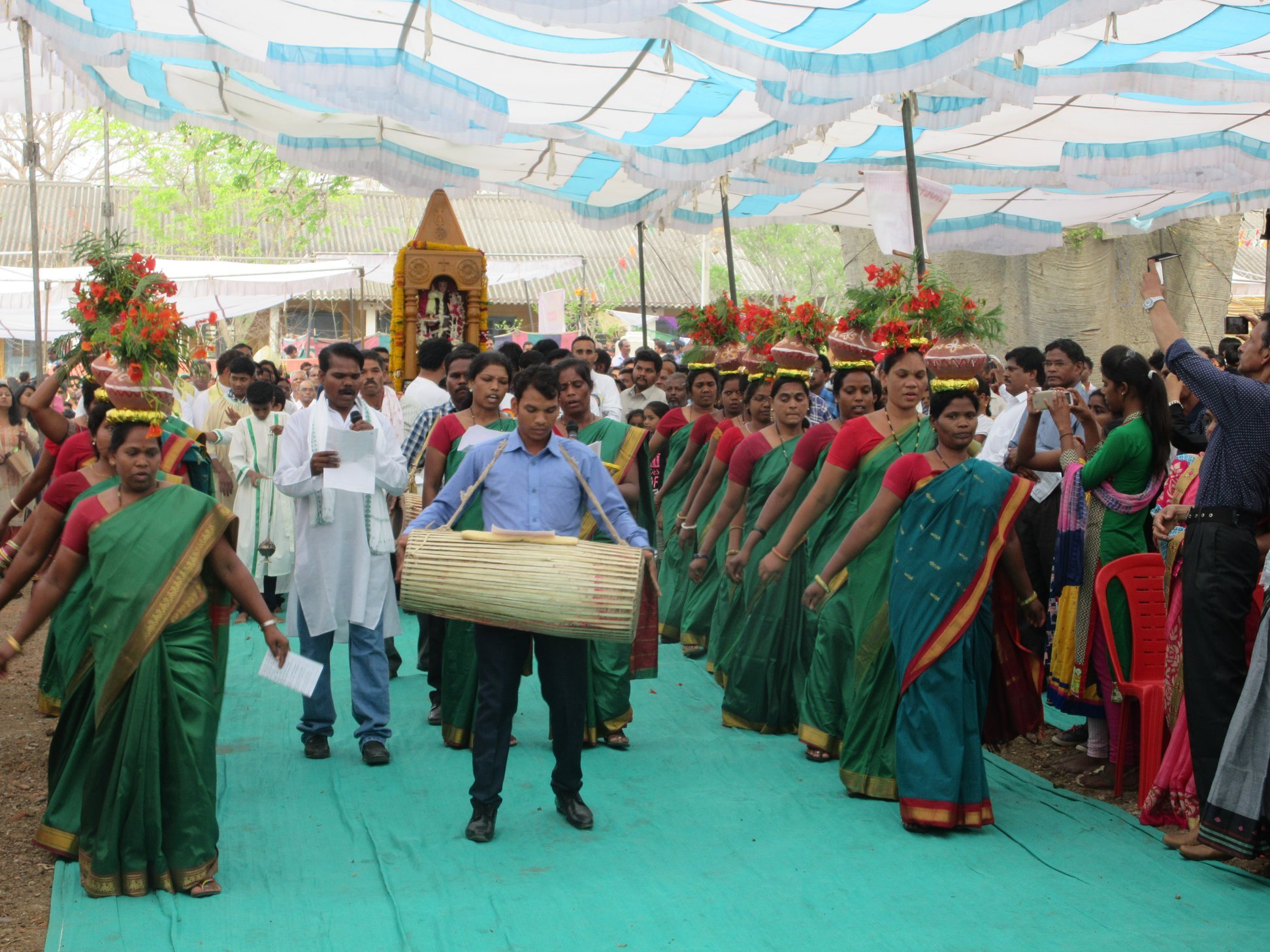Pilgrimage: Inside an Indian village’s devotion to Saint Anthony
Catholics in the Indian city of Mhow lead a procession in honor of Saint Anthony on his feast day in 2019. Photo courtesy of St. Anthony’s Church.
Nestled between the Chambal and Narmada river basins in central India is the town of Mhow. The town, formerly a large British miliary base, can be reached along the highway that connects Mumbai and Agra.
But this largely agrarian community is famous for something else — its devotion to Saint Anthony.
St. Anthony’s Church in Mhow is more than 125 years old. Thousands of believers visit this church year-round from across India. Every year, large crowds descend on Mhow for the June 13 feast of Saint Anthony. Like in Italian towns where the saint is paraded through the streets, the people of Mhow also celebrates the feast with an outdoor Mass and a statue of the saint decorated with vibrant, locally-grown flowers.
This year’s feast was curtailed because of India’s national coronavirus lockdowns that forced the church — and so many houses of worship across India and the world — to temporarily close in order to stop the contagion. But India’s Catholics didn’t let physical limitations stop them from celebrating this beloved saint.
Nine days before the annual feast day, thousands participated in a novena via internet. On June 13, similar numbers of worshippers celebrated online, a new spin on a tradition that began at the church in on June 17, 1893 to commemorate the saint’s death — the same day that a heavy rainfall deluged the town. A heavy rain also accompanied this year’s remote celebrations.
Saint Anthony is buried some 4,000 away in the city of Padua in Italy. His body was placed in St. Maria Mater Domini Church on June 17, 1232. He was made a saint that year, one of the fastest canonizations in church history. As a result, Christians originally celebrated his the feast on June 17, but the date was later moved to June 13. The Franciscan friar, who was born in Portugal, had been born into a wealthy family — only for him to renounce his wealth and preach the Gospel. Saint Anthony, known for performing many miracles, devoted his life to helping the poor. He is considered the patron saint of lost causes.
The devotion to Saint Anthony in Mhow is very rich and dates as far back as when the British arrived in 1818. The construction of an army base about a mile from the village drew workers from across the country. Many of them were Tamil Catholics.
While India is a predominantly Hindu nation, there are some 20 million Roman Catholics living there, which equals about 1.5% of the country’s total population. That makes India the population with the second-highest percentage of Catholics after The Philippines.
The statue of St. Anthony located in Mhow. Photo courtesy of St. Anthony’s Church.
Around 1883, a capuchin priest came to the area from Italy. With help from the Tamil people, a small chapel to Saint Anthony was built. The first Mass to take place there was in 1891. The chapel quickly drew followers. Six years later, French Capuchins came to Mhow. They helped to complete a new, and larger, chapel to Saint Anthony.
Mhow’s devotion to Saint Anthony took on a larger feel in 1893 when a capuchin from Italy, Father Pius Benevento, took the statue out in procession for all to see. Accounts from the time reveal that an estimated 1,000 people took part in the celebration — and a new tradition in this Indian village was born.
According to the records of the Mission Sisters who arrived in Mhow in 1892, there was heavy rainfall at around 6 p.m. on the day of the first observed feast.
In 1950, the chapel was enlarged where the present-day Saint Anthony’s Church now stands. The tradition in Mhow calls for the celebrations around Saint Anthony to start nine days in advance on June 4. The church remains open through his feast days — the only time of year that happens — and culminates with a procession. Catholics from across India descend on the town. While this year’s feast was different than in past years, Catholics in Mhow anxiously await for the pandemic to come to an end so that they can be reunited with their beloved saint.
Lucy Gabriel is based in New Delhi, India and a member of The Media Project.


